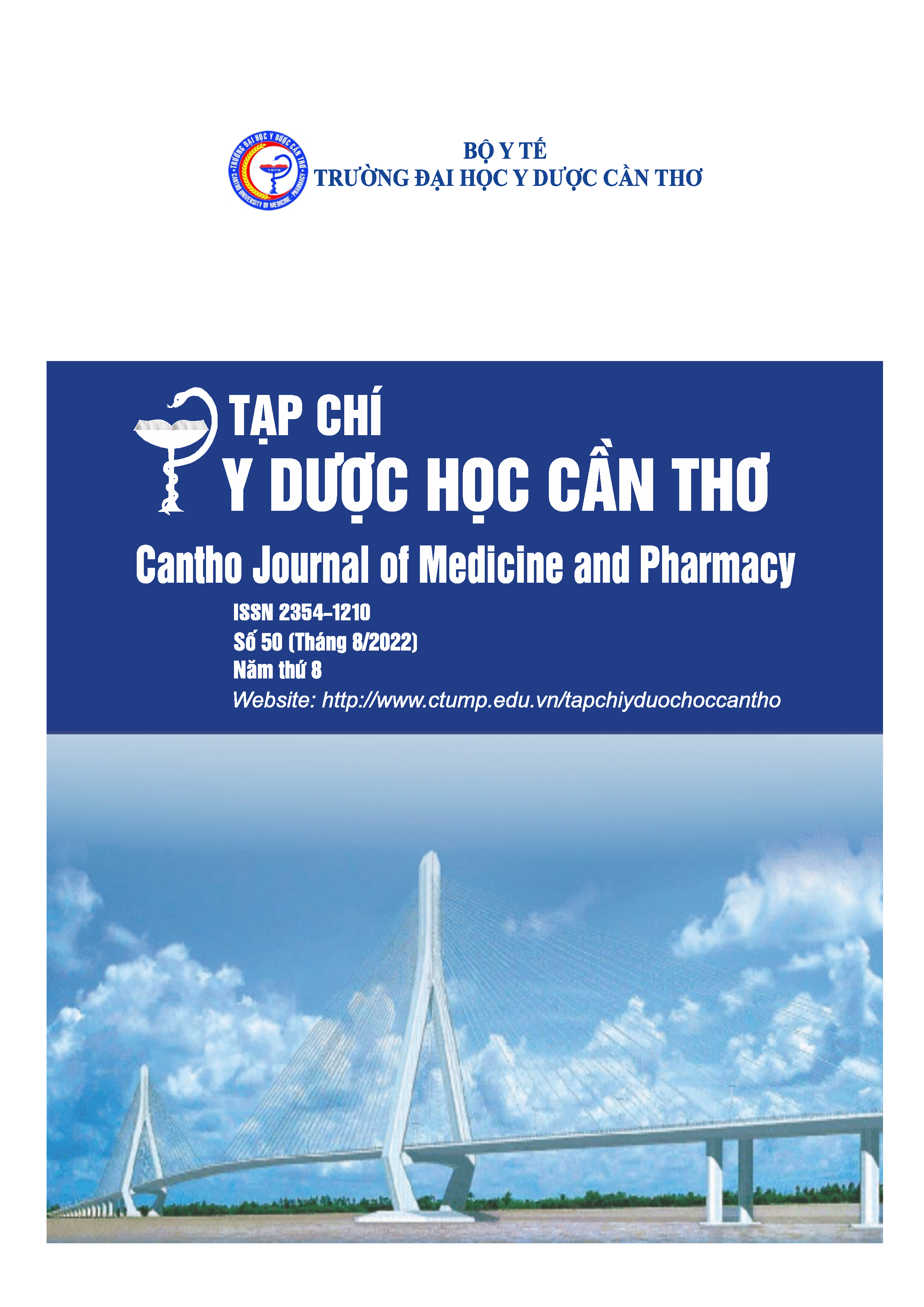INFLUENCE OF HYPERTRIGLYCERIDEMIA ON SOME INDICATORS OF COMPLETE BLOOD COUNT AT CAN THO UNIVERSITY OF MEDICINE AND PHARMACY HOSPITAL IN 2021-2022
Main Article Content
Abstract
Background: The complete blood count (CBC) test is usually performed on an automatic analyzer counter, which operates on the principles of light and optics mainly. There is a proportion of hyperlipidemia samples causing plasma turbidity, it fluctuates in the range from 0.5% to 2.5% and blood turbidity is one of the causes affecting the accuracy of this principle. Objectives: To determine the proportion of complete blood count (CBC) results affected by hyperlipidemia and the threshold of hyperlipidemia that affects the CBC results. Materials and methods: A cross-sectional descriptive study on EDTA blood samples of patients have been tested CBC test and triglyceride test result ≥3.4mmol/L at Can Tho University of Medicine and Pharmacy Hospital. Results: The proportion of CBC indicators which was changed in blood samples had triglyceride concentration ≥3.4mmol/L: HGB (100%), MCH (100%), RBC (80%), HCT (86%), MCHC (78%), RDW (92%), WBC (64%), PLT (50%). Triglyceride=4.2mmol/L (samples had the lowest concentration in triglyceride group >3.4mmol/L) were selected as the concentrtion threshold of triglyceride that affected some CBC indicators. Conclusion: Samples had triglyceride ≥3.4mmol/L affect almost CBC indicator in which RBC, HGB, HCT, MCH, MCHC changed statistically significant (p<0.05).
Article Details
Keywords
Hypertriglyceridemia, hyperlipidemia, complete blood count
References
2. Corporation, Nihon Kohden (2013), Automated Hematology Annalyzer MEK-7300K, Japan
3. Diagnostics, Roche (2019), Serum Indices: Reduction of clinical errors in laboratory medicine, Germany.
4. Kroll, M. H., & Elin, R. J. (1994), “Interference with clinical laboratory analyses”, Clinical chemistry. 40(11), pp.1996-2005.
5. Lippi, G., et al. (2013), “Preanalytical quality improvement: in quality we trust”, Clin Chem Lab Med. 51(1), pp.223-224.
6. Mohammad H. Sadeghian, et al. (2008), “Correlation Between Hyperlipemia and Erythrocytes Indexes”, Uluslararasi Hematoloji-Onkoloji Dergisi, pp.150-154
7. Nikolac, N. (2014), “Lipemia: causes, interference mechanisms, detection and management”, Biochem Med (Zagreb). 24(1), pp.57-61.
8. Nívea Nara N. Andrade, Marcio V. Oliveira, and Souza, and Claudio L. (2106), “Procedures to minimize interference of hypertriglyceridemia in laboratory exams of lipemic samples in acute pancreatitis: a case report”, J Bras Patol Med Lab, 52(2), pp.103-106
9. Seyedeh Niloofar Hashemi, et al. (2020), “The effects of Hyperglycemia and Hyperlipidemia on blood indices”, Journal of Advanced Pharmacy Education & Research, pp.109-110.
10.Su-Gen Zeng, et al. (2013), “A Simple, Fast Correction Method of Triglyceride Interference in Blood Hemoglobin Automated Measurement”, Journal of Clinical Laboratory Analysis, pp.341-345.


